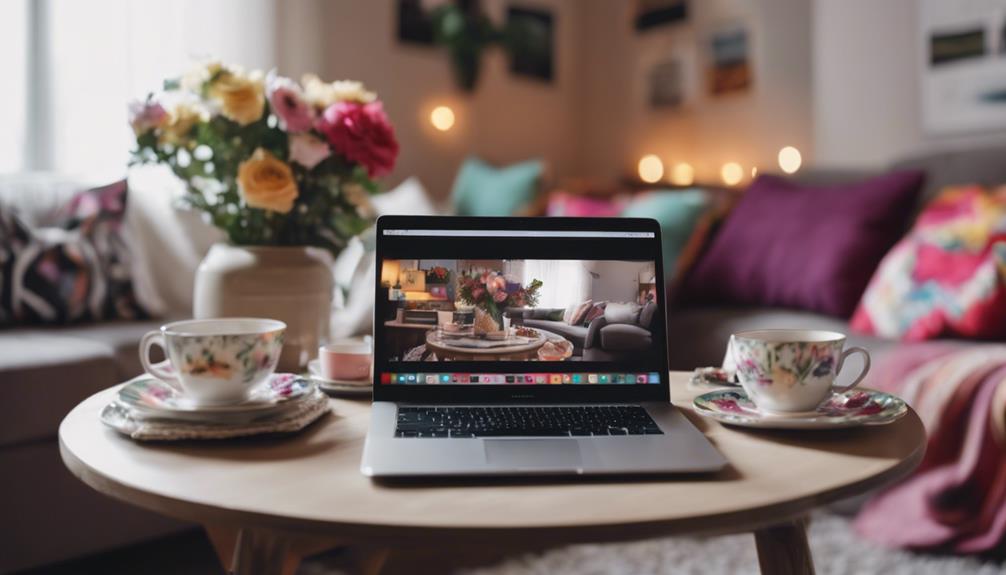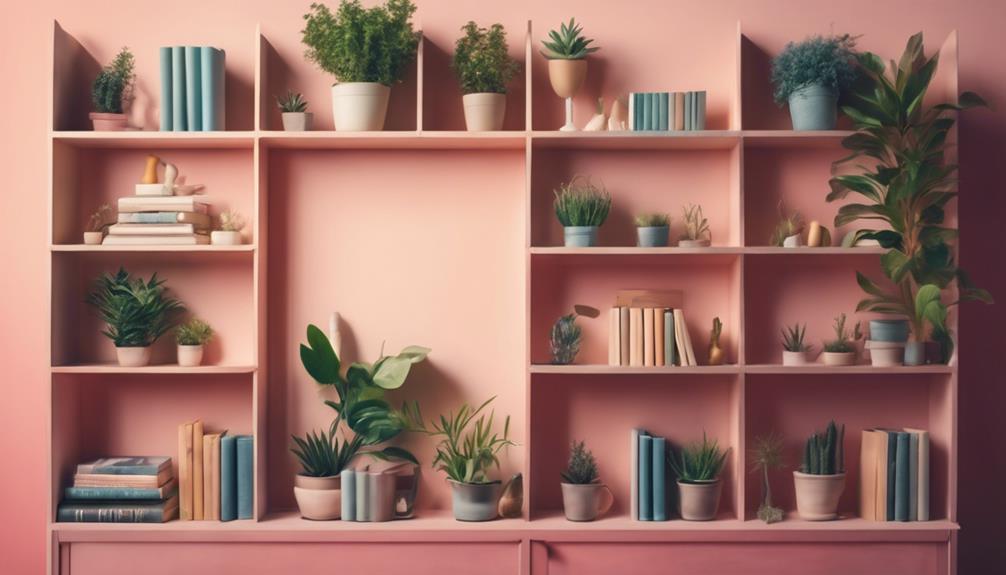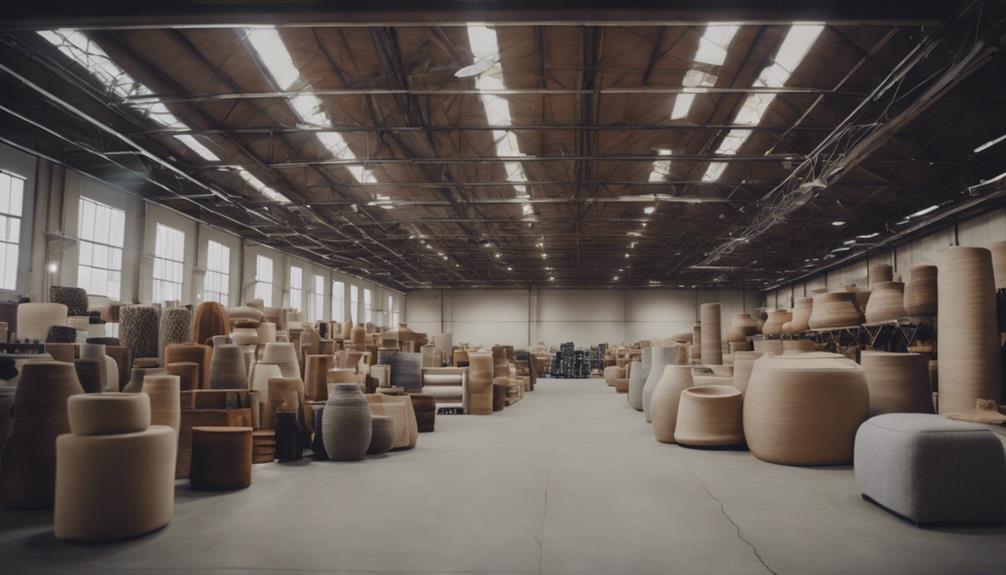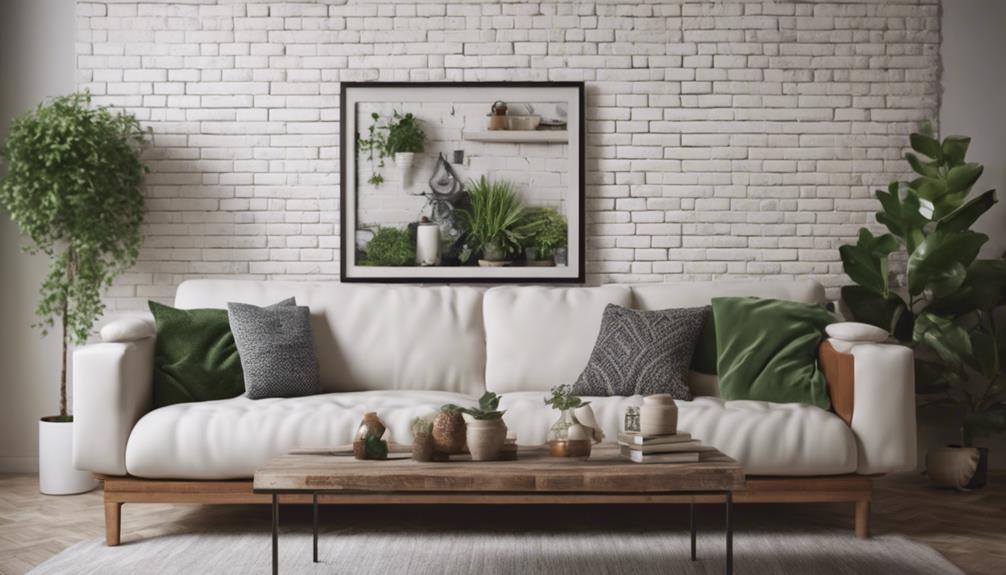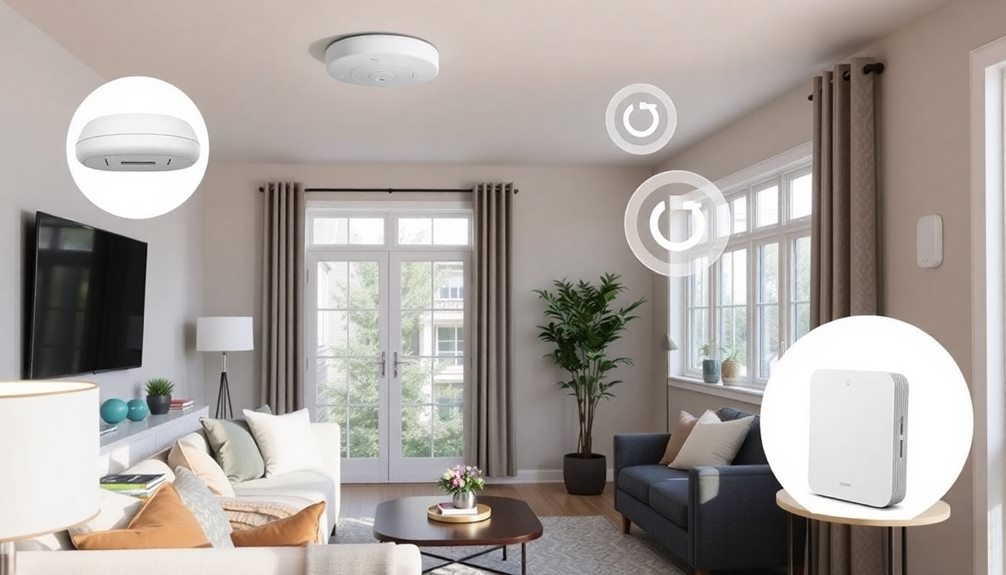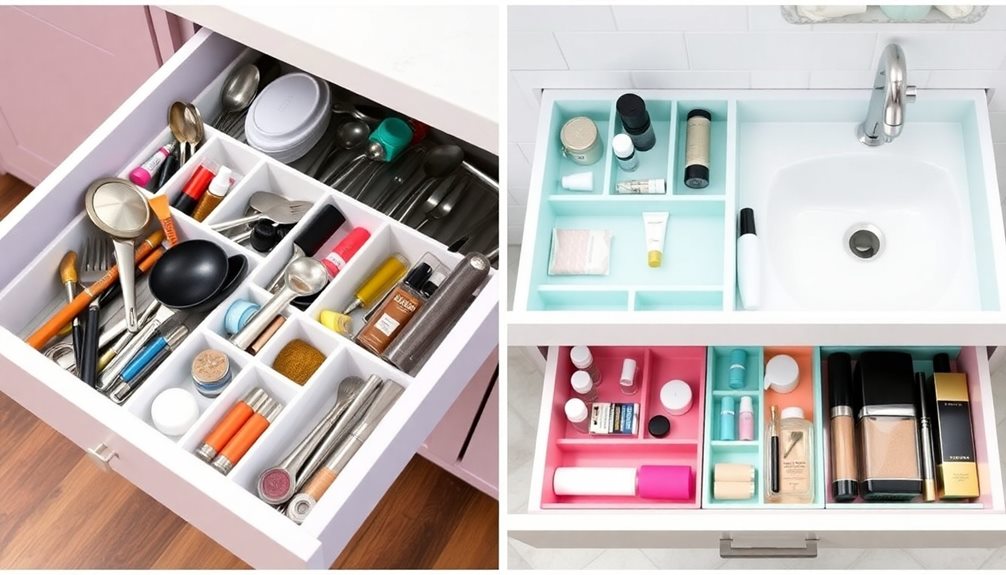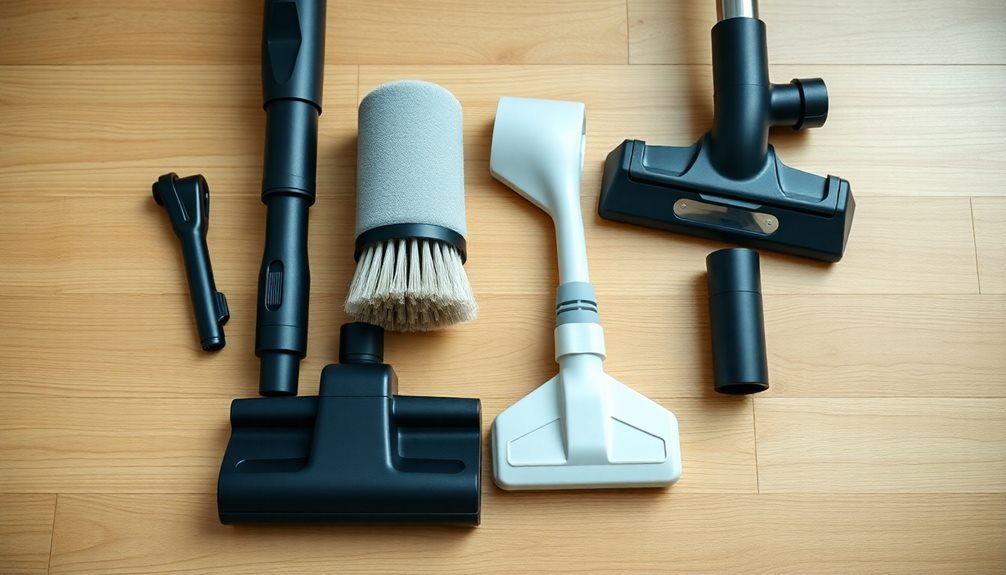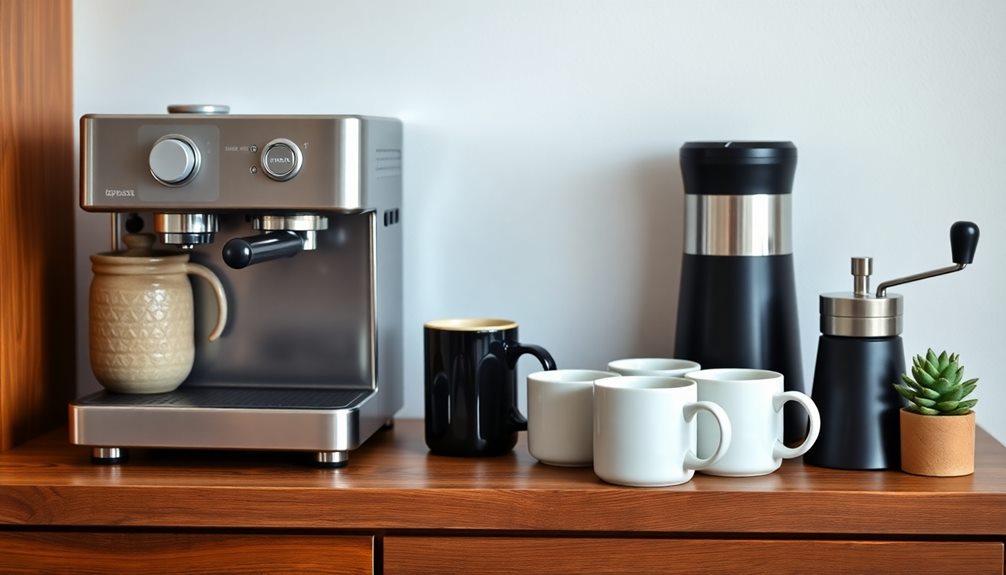When creating a DIY rustic address planter, we'll need a plastic planter, address numbers, screws, and a metal French cleat hanger, among other materials. We'll start by preparing the wall surface, cleaning it with mild detergent and treating any mold or mildew with bleach. Next, we'll attach the French cleat hanger to the wall, ensuring a level and sturdy connection. We'll then assemble the planter box using cedar boards and pocket hole screws, attaching it to the planked back. Finally, we'll mount the planter to the wall and add address numbers, plants, and decorations. As we continue, we'll explore more tips and tricks to perfect our rustic address planter creation.
Key Takeaways
• Prepare the wall surface by cleaning, removing old adhesive, and sanding for a polished finish.
• Attach a metal French cleat hanger to the wall, ensuring level alignment and a watertight seal.
• Assemble the planter box using cedar boards, Kreg Jig, and pocket hole screws for a sturdy rustic design.
• Mount the planter to the wall using the French cleat hanger, drilling pilot holes for a secure attachment.
• Add address numbers, plants, and decorations, finishing with a protective outdoor sealant for durability and maintenance.
Gathering Essential Materials
We start by gathering the essential materials needed to create our rustic address planter. Our planter box will require a few specific items to make sure a sturdy and attractive final product.
First, we'll need a plastic planter with a flat back, which will serve as the base of our address planter. We'll also need address numbers, which will be securely attached to the planter using screws and a suitable adhesive. A metal French cleat hanger is important for mounting the planter to the wall, providing a secure and level attachment.
Additionally, we'll need a drill, screwdriver, level, and pencil or marker to complete the project. To make sure a watertight seal, we'll use an exterior silicone-based sealant. By gathering these materials, we'll be well-prepared to create a beautiful and functional rustic address planter that will enhance our home's exterior.
Preparing the Wall Surface

As we prepare the wall surface for our rustic address planter, we need to focus on three essential points: cleansing the wall, removing old adhesive, and smoothing the surface.
We'll start by thoroughly washing the wall with a mild detergent to remove dirt, dust, and debris that could affect the adhesion of our planter. By doing so, we'll guarantee a smooth, even surface that provides a secure mounting base for our rustic address planter.
Cleansing the Wall
Let's scrub away dirt, grime, and debris from the wall surface with a mild detergent or cleaning solution to guarantee a clean slate for our rustic address planter.
We want to make sure a smooth and even surface for our planter to adhere to, so we'll use a soft-bristled scrub brush or sponge to gently scrub away any imperfections. A cleaning solution is vital in removing dirt and grime, allowing our planter to stick securely to the wall.
After scrubbing, we'll rinse the wall with clean water to remove any leftover cleaning solution and let it dry completely. It's essential to check for any mold or mildew growth on the wall and treat it with a bleach solution before proceeding with the installation.
We'll also smooth out any rough patches or imperfections on the wall surface to ensure a flat and even base for attaching the address planter. By following these steps, we'll have a clean and prepared surface for our rustic address planter to shine.
Removing Old Adhesive
With our wall surface now clean and dry, we tackle the remnants of old adhesives that might interfere with our rustic address planter's secure attachment. To remove these pesky residues, we'll employ a combination of heat, elbow grease, and specialized products.
First, we'll use a heat gun or hairdryer to soften the old adhesive, making it more pliable and easier to remove. Next, we'll gently scrape off the softened adhesive with a putty knife or scraper, taking care not to gouge the wall surface.
For particularly stubborn residue, we'll apply a commercial adhesive remover or rubbing alcohol, allowing it to penetrate and break down the adhesive bonds. Finally, we'll wipe down the wall with a damp cloth to remove any remaining adhesive or residue, ensuring a clean slate for our planter's installation.
With the wall surface now free of old adhesives, we can proceed with confidence, knowing our rustic address planter will adhere securely and beautifully.
Smoothing the Surface
We grab our sanding block or sandpaper to smooth out the wall surface, eliminating any rough patches or imperfections that could interfere with our rustic address planter's adhesion. A smooth surface is essential for a strong bond between the planter and the wall.
To achieve this, we need to sand the wall, removing any dirt, dust, or debris that may be present.
Here are the key steps to follow:
- Sand the wall surface using a sanding block or sandpaper to create a smooth and even texture.
- Remove any dirt, dust, or debris from the wall surface before proceeding with attaching the planter.
- Smooth out any rough patches or imperfections on the wall to ensure proper adhesion of the planter.
- Wipe down the wall with a damp cloth to clean off any remaining residue or particles after sanding.
- A smooth wall surface will help the planter adhere securely and evenly for a polished finish.
Attaching the French Cleat Hanger

As we progress with attaching the French cleat hanger, we'll need to focus on two critical aspects: hanger assembly tips and cleat placement essentials. By adhering to these guidelines, we can guarantee a secure and level connection between the planter box and the wall.
Hanger Assembly Tips
We position the French cleat hanger carefully on the wall, making sure it's securely attached with appropriate screws. This is an important step in assembling our rustic address planter. To guarantee a successful installation, we must pay attention to a few key details.
Here are some essential hanger assembly tips to keep in mind:
- Make certain the French cleat hanger is securely attached to the wall with appropriate screws.
- Use a level to confirm the hanger is straight for proper alignment with the planter box.
- Seal around the screw holes with exterior silicone-based sealant to prevent water damage.
- The hanger should be positioned at the correct height and distance from other elements on the wall.
- Avoid over-tightening the screws when attaching the cleat hanger to the planter to prevent damage to the planter material.
Cleat Placement Essentials
When attaching the French cleat hanger, we'll ensure a sturdy connection by drilling pilot holes in the wall, which helps prevent the screws from splitting the material. This critical step guarantees that our DIY address planter remains securely in place.
Next, we'll seal around the screw holes with an exterior silicone-based sealant to prevent water damage and maintain a watertight seal. It's vital to make sure the cleat hanger is level both on the wall and on the planter box for proper alignment.
We'll avoid over-tightening the screws when attaching the cleat hanger to prevent damage to the planter. A secure attachment between the planter and the cleat hanger is crucial for stability and long-term use.
Assembling the Planter Box

We'll begin by cutting the cedar board into three equal pieces to create the sides of our planter box. After that, we'll use a Kreg Jig to add pocket holes for assembly, guaranteeing a sturdy construction.
Here's a breakdown of the assembly process:
- Cut the cedar board into three pieces to create the sides of the planter box
- Use a Kreg Jig to add pocket holes for assembly
- Secure the boards together with pocket hole screws for a robust construction
- Make cuts in the planked back to insert the planter box securely
- Attach the planter box to the planked back to complete the rustic address planter
As we assemble the planter box, we'll make sure that it's strong enough to hold the weight of the plants and the mail. After all, we want our email address to be displayed proudly on our rustic address planter, don't we?
Mounting the Planter to Wall

With our planter box securely assembled, it's time to focus on mounting it to the wall, guaranteeing our rustic address planter remains stable and level. To achieve this, we'll use a metal French cleat hanger, which provides a sturdy attachment to the wall.
Before we start, we need to make sure the wall surface is clean and suitable for attachment. Next, we'll drill pilot holes for hard materials to avoid damaging the wall or the hanger. Once the holes are drilled, we'll secure the hanger to the wall, ensuring it's level and stable.
To add an extra layer of protection, we'll apply exterior silicone-based sealant around the screw holes. This will prevent water from seeping behind the planter and causing damage.
Installing Address Numbers

Let's position our address numbers thoughtfully to achieve a balanced, visually appealing look on our rustic planter box. We want to guarantee our address numbers are easily readable and complement the overall design of our planter. To achieve this, we'll follow a few key guidelines.
- Position the address numbers evenly on the planter box for a balanced look.
- Use a level to make sure the numbers are straight and aligned properly.
Secure the address numbers to the planter box with screws or adhesive, depending on the material.
Consider painting or staining the address numbers to match the overall aesthetic of the planter.
Double-check the spacing and placement of the address numbers before finalizing their attachment.
Adding Plants and Decorations

We're ready to bring our rustic planter box to life by adding plants and decorations that reflect our personal style.
After installing the address numbers, we can now focus on adding some greenery to our planter. We'll head to Home Depot to pick out some low-maintenance plants like succulents or herbs that will thrive in our rustic planter. To prevent water damage, we'll use a thin board or plastic liner to separate the plants from the wood.
To add some visual interest, we can incorporate decorative elements like faux moss or small garden figurines. We can also customize our planter with painted designs or stenciled patterns to match our home's aesthetic.
To add a seasonal touch, we can incorporate decorations like mini pumpkins for fall or small flags for holidays. By adding these finishing touches, we'll create a unique and inviting rustic address planter that reflects our personal style.
Final Touches and Maintenance
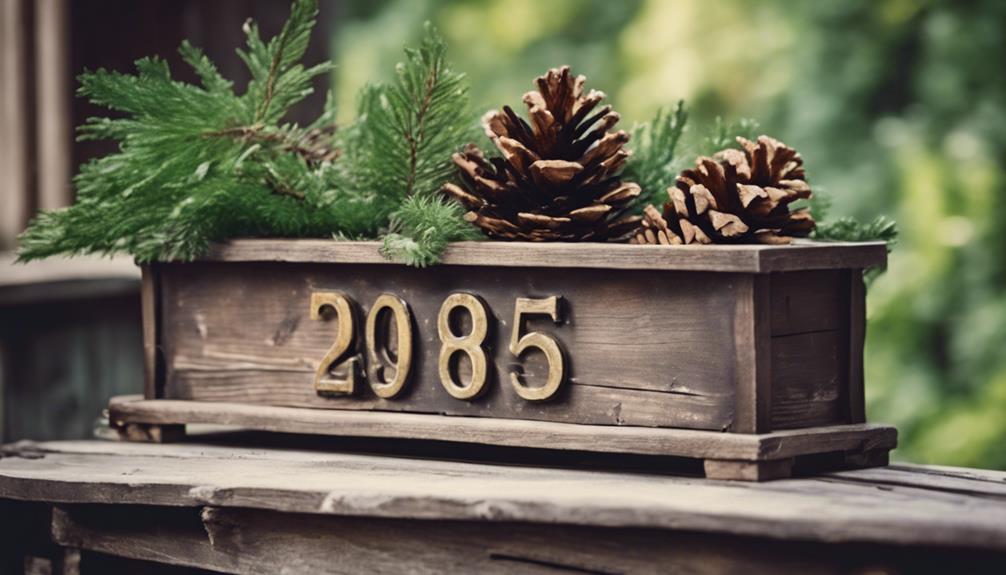
Now that our rustic address planter is complete, it's time to focus on the final touches and ongoing upkeep to guarantee it remains a beautiful and functional addition to our home's exterior.
To make sure our planter stays in top condition, we need to perform some essential maintenance tasks.
Here are the key steps to follow:
- Apply a protective outdoor sealant to the planter box to guarantee durability and weather resistance.
- Regularly clean the address numbers to maintain visibility and prevent build-up of dirt or debris.
- Check the planter box for any signs of damage or wear and perform necessary maintenance as needed.
- Consider seasonal decorations or plant changes to keep the address planter fresh and appealing.
- Monitor the overall condition of the address planter to ensure it continues to enhance the exterior of your home.
Frequently Asked Questions
How to Build an Address Post?
We're building an address post by setting a 4×4 wooden post in concrete, attaching a decorative topper, and screwing on a metal address plate – it's sturdy, stylish, and easy to read from the street!
How Do You Make a Pallet Planter?
We once repurposed an old pallet into a charming planter, and it was a game-changer! To make one, we disassemble the pallet, cut it to size, add drainage holes, and line it with a protective layer before filling with potting mix and plants.
Conclusion
As we step back to admire our handiwork, our rustic address planter takes center stage, a charming fusion of rustic charm and modern functionality.
Like a perfectly placed punctuation mark, it elevates our home's curb appeal, making a bold statement about our sense of style.
And, as we tend to the plants and watch them thrive, we're reminded that, indeed, 'the smallest acts of beauty can have a profound impact' (Amy Stewart, The Drunken Botanist).

